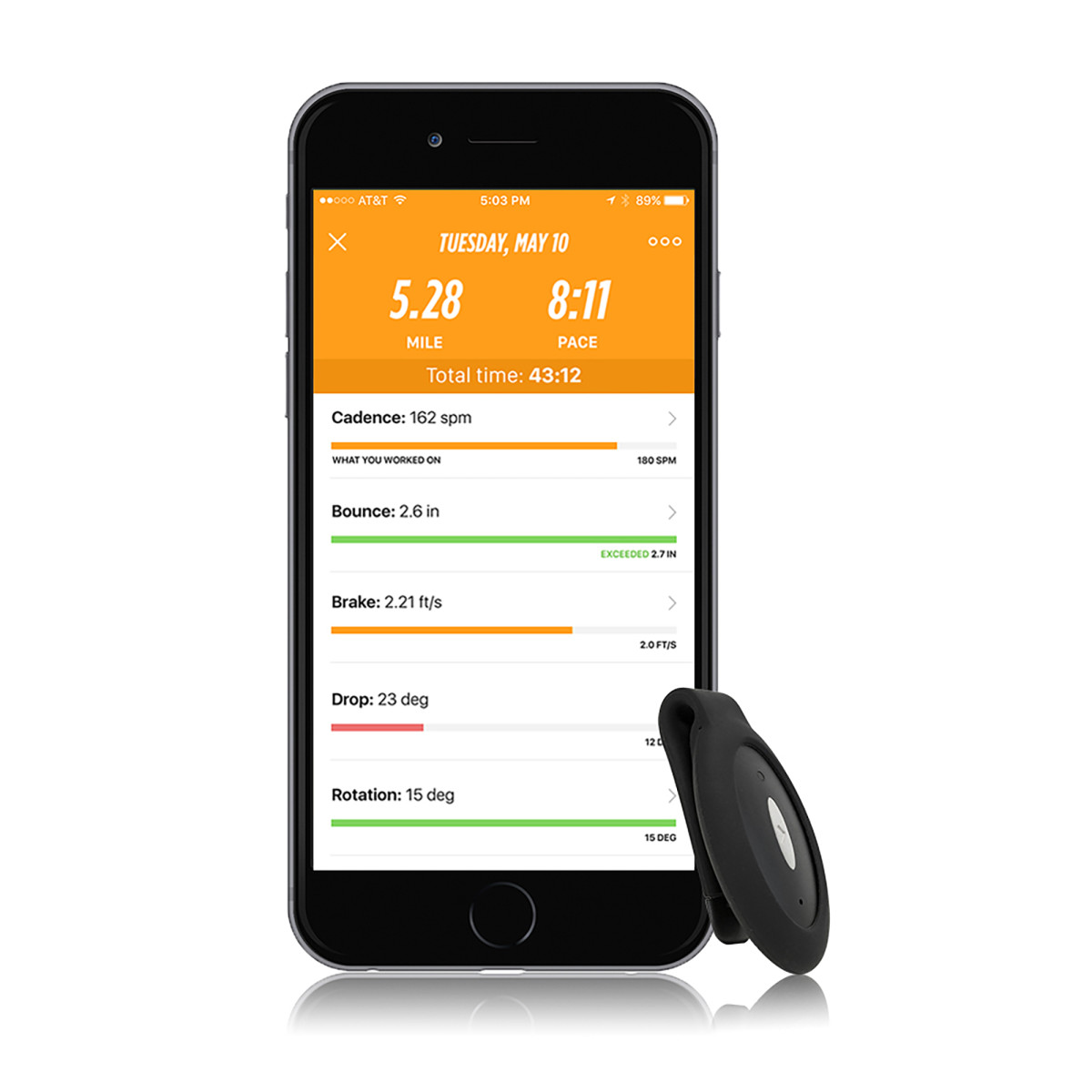Become a better runner with this wearable that tracks your hip and pelvic motion

The secret to better running—faster times and lower injury risk—might lie in your hips rather than in your feet. According to Rebecca Shultz, a biomechanist at wearables company Lumo Bodytech, how you move and control your body’s core can matter more than the shoes that you wear.
Lumo’s latest product, Lumo Run, is a small, pebble-shaped device that clips onto a runner’s waistband at the base of their spine. Accelerometers and gyroscopes inside can then determine how the runner’s pelvis is moving through space. That data can be used to determine your running biomechanics, and with coaching, teach you “how to be efficient,” Shultz says, “and how to reduce your risk of injury.”
What to eat before, during and after running, no matter the distance
Retailing for $99.99, Lumo Run is at the lower end of the wearable device market, and the device itself looks relatively basic: it has a mini-USB charging socket, but nothing else, not even a power button. It is turned on simply by running. We looked at all the data that was coming off the sensors,” explains David Woods, head of engineering at Lumo Bodytech. “There’s certain thresholds and certain types of movement that are very specific to running.” Lumo Run detects the movement change from walking and begins recording.
Schultz previously worked at Stanford University’s Human Performance Lab, and still helps with running clinics there, and that experience has helped shaped the design of Lumo Run. “The more technology you throw at the person, the more aware they are, and the more they are on their best behavior,” she says.
That means a person might not run with their true running biomechanics in a laboratory setting. Although more detailed information on form could be obtained by placing multiple sensors on a person’s body, Lumo Run’s simplicity and relatively inconspicuous nature therefore might help ensure it is analyzing the person’s real form.

When connected up to an iPhone—5S models or newer—Lumo Run provides numbers for five metrics: cadence, bounce, braking, pelvic drop, and pelvic rotation. (The company hopes to add some additional metrics via software updates in the future.) Individually, those measure the number of strides per minute, the vertical movement on each step, the amount a runner slows down each time their foot hits the ground, how much a runner’s unsupported hip drops each time the opposite foot lands, and the horizontal rotation of the hip bones during each stride. Together they can help determine a runner’s form, and diagnose potential problems.
“Everyone has their unique form,” Shultz says. “But there are certain red flags that are red flags for all. Pelvic drop is a red flag for all. Whether you’re elite or not, whoever you are, if your pelvis is dropping when you hit the ground then you need to strengthen your glutes.” That might mean you need to work on strengthening exercises before hitting the trail.
Athletes can now track hemoglobin and pulse rate levels without getting bloodwork
Substantial training without correcting errors in form can have long lasting effects. “If you’re a new runner, you develop bad habits through all of that,” Shultz says. “If you’re an elite runner, you’re getting a little less out of all of those miles with the inefficiency and the injury risk involved.” And even though form problems in experienced runners may be smaller, those runners will typically train over much longer distances, raising the chance of those bad habits leading to injury. If you are a runner, Schultz says, you should be “putting as much time and energy and thought into form as you do nutrition or hydration or your training program.”
While Lumo Run can be used simply to record data, runners who take their phone and a pair of headphones along on each run can listen to coaching advice while they train. One of the features of Lumo’s coaching philosophy is not to push anyone too much at once. First, users select which one of the five different metrics to focus on, though “generally if your cadence is below 170, we will start you there,” Shultz says, “knowing that changing your cadence can influence your bounce and brake.” Second, the automated coach only aims for a 5% improvement on each goal at any one time. “It never feels good when you try to improve. Anyone who’s tried to lose weight, or improve their pace or anything, knows that it always feels worse before it feels better,” Shultz says.

When ultrarunner Sage Canaday, who is sponsored by Lumo Bodytech, first began using the device, his cadence on easy runs was typically 168 to 170 strides per minute. Ideally cadence should be greater than 180, and a higher cadence for the same speed decreases stride length and thus decreases the chance a runner may overstride and land on their heel instead of their toes.
Now his cadence on easy runs lies around 177 to 180, an average increase of more than 5%, and as a result he heel strikes less, reducing impact forces. Explaining how he has used Lumo Run in one of his coaching videos, Canaday credits the constant feedback from the device. “It takes changes in neuromuscular patterns between your brain and your muscle fibers to develop these more efficient types of running form,” he says. Those changes can feel unnatural at first because both time and repetition are needed before they become automatic.
